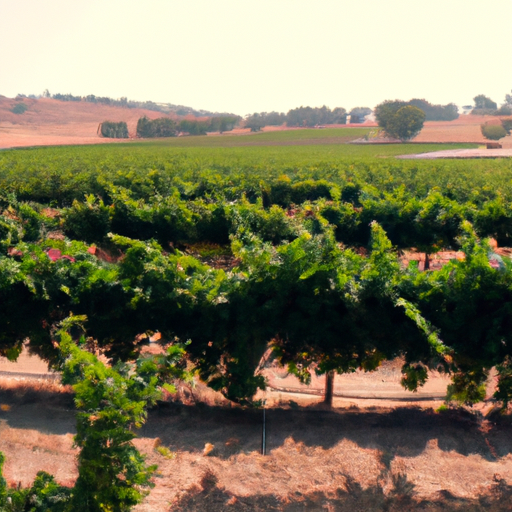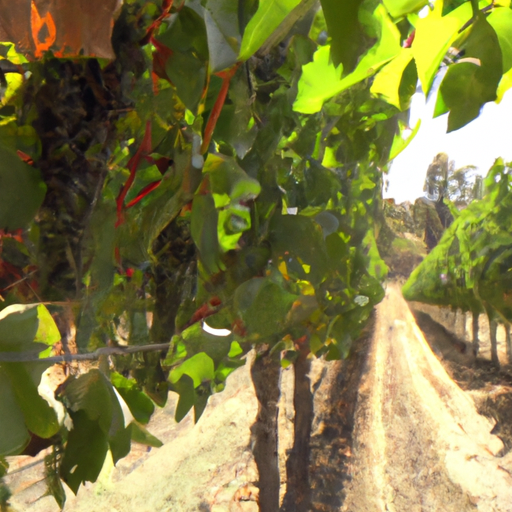
The Importance of Timing: How Winemakers in Temecula Valley Prepare for Harvest
Anticipation Builds: Temecula Valley Winemakers Await Harvest
The Importance of Timing: How Winemakers in Temecula Valley Prepare for Harvest
In the picturesque region of Temecula Valley, winemakers are eagerly awaiting the arrival of harvest season. This time of year is crucial for the production of high-quality wines, as it marks the culmination of months of hard work and careful planning. The success of the harvest depends on a variety of factors, but perhaps none is more important than timing.
Timing is everything in winemaking. From the moment the grapes are picked to the moment they are pressed, every step must be executed with precision. This is especially true in Temecula Valley, where the warm Mediterranean climate and unique terroir create ideal conditions for grape cultivation. The winemakers here understand that the key to producing exceptional wines lies in knowing when to harvest.
The decision of when to harvest is not one that can be made lightly. Winemakers must consider a multitude of factors, including sugar levels, acidity, and flavor development. They rely on their experience and expertise to determine the optimal time to pick the grapes, ensuring that they are at their peak ripeness and flavor.
One of the most important tools in a winemaker’s arsenal is the refractometer. This device measures the sugar content in the grapes, which is a crucial indicator of ripeness. Winemakers regularly test the grapes leading up to harvest, monitoring the sugar levels to determine when they have reached the desired range. This information helps them make informed decisions about when to begin picking.
Acidity is another key factor that winemakers must consider. Grapes with high acidity levels can produce wines that are crisp and refreshing, while those with lower acidity can result in wines that are flabby and lackluster. Winemakers carefully monitor the acidity levels in the grapes, adjusting their harvest plans accordingly to ensure the desired balance in the final product.
Flavor development is perhaps the most subjective aspect of the harvest decision. Winemakers must rely on their senses and intuition to determine when the grapes have developed the desired flavors. They taste the grapes regularly, paying close attention to the nuances and complexities that emerge as the fruit matures. This sensory evaluation is a crucial step in the winemaking process, as it allows the winemaker to assess the potential of the grapes and make informed decisions about when to harvest.
Once the decision to harvest has been made, winemakers must act quickly. The grapes are carefully hand-picked and transported to the winery, where they are sorted and destemmed. This meticulous process ensures that only the highest quality grapes make it into the fermentation tanks.
The anticipation builds as the grapes are pressed, and the juice begins its transformation into wine. The winemakers closely monitor the fermentation process, adjusting temperature and yeast levels as needed to achieve the desired flavor profile. This is a critical time for the winemakers, as they must carefully guide the wine through its journey from grape to bottle.
As the harvest season approaches in Temecula Valley, winemakers are filled with excitement and anticipation. They have spent months preparing for this moment, carefully tending to their vineyards and monitoring the progress of the grapes. Now, the time has come to put their skills and knowledge to the test, as they strive to create wines that capture the essence of this unique region.
In the world of winemaking, timing is everything. The success of the harvest depends on the winemaker’s ability to make informed decisions about when to pick the grapes, based on factors such as sugar levels, acidity, and flavor development. It is a delicate balance that requires skill, experience, and a deep understanding of the grapes and the land from which they come. As the anticipation builds in Temecula Valley, winemakers eagerly await the arrival of harvest season, knowing that the fruits of their labor will soon be transformed into exceptional wines.
Unveiling the Secrets of Grape Ripening: A Closer Look at the Anticipation of Harvest in Temecula Valley

Anticipation Builds: Temecula Valley Winemakers Await Harvest
As the summer months come to a close, winemakers in Temecula Valley are eagerly awaiting the start of the harvest season. This is a time of great excitement and anticipation, as the grapes that have been carefully nurtured throughout the year are finally ready to be picked and turned into the delicious wines that Temecula Valley is known for.
The process of grape ripening is a fascinating one, and winemakers in Temecula Valley have spent years perfecting their techniques to ensure that they are able to produce the highest quality wines possible. It all starts with the careful selection of grape varieties that are best suited to the unique climate and soil conditions of the region.
In Temecula Valley, the warm days and cool nights create the perfect environment for grape ripening. The hot sun helps to develop the sugars in the grapes, while the cool nights help to preserve the acidity that is essential for balanced wines. This combination of factors gives Temecula Valley wines their distinctive character and flavor.
As the harvest season approaches, winemakers closely monitor the ripening process of the grapes. They carefully inspect the vines, checking for signs of maturity such as color change and sugar levels. This is a critical time, as picking the grapes at the optimal moment is crucial for producing wines of exceptional quality.
The anticipation builds as winemakers wait for the perfect balance of flavors and aromas to develop in the grapes. They know that each day brings them closer to the moment when they can finally begin the harvest. It is a time of great excitement, but also of nervousness, as the weather can play a significant role in the success of the harvest.
Once the grapes have reached their peak ripeness, the harvest begins. This is a labor-intensive process that requires a team of skilled workers to carefully hand-pick each grape cluster. The grapes are then transported to the winery, where they are sorted and destemmed before being gently pressed to extract the juice.
The juice is then fermented, a process in which the sugars in the grapes are converted into alcohol. This is a crucial step in winemaking, as it is during fermentation that the flavors and aromas of the wine are developed. The winemakers closely monitor the fermentation process, ensuring that the temperature and other conditions are just right to produce the desired results.
After fermentation, the wine is aged in oak barrels or stainless steel tanks, depending on the winemaker’s preference. This allows the flavors and aromas to further develop and integrate, creating a wine that is complex and well-balanced. The length of the aging process varies depending on the type of wine being produced, with some wines requiring several years of aging before they are ready to be enjoyed.
As the harvest season comes to a close, winemakers in Temecula Valley can finally take a moment to reflect on the hard work and dedication that went into producing their wines. They know that each bottle represents the culmination of a year’s worth of effort, and they take great pride in sharing their creations with wine lovers around the world.
In conclusion, the anticipation of the harvest season in Temecula Valley is a time of great excitement and nervousness for winemakers. They carefully monitor the ripening process of the grapes, waiting for the perfect moment to begin the harvest. The labor-intensive process of picking and processing the grapes is followed by fermentation and aging, all with the goal of producing wines of exceptional quality. As the harvest season comes to a close, winemakers can finally take pride in their hard work and share their creations with the world.
From Vine to Bottle: Exploring the Journey of Winemaking in Temecula Valley’s Harvest Season
Anticipation Builds: Temecula Valley Winemakers Await Harvest
As the summer months come to a close, winemakers in Temecula Valley are eagerly awaiting the start of the harvest season. This is a crucial time for these dedicated individuals, as it marks the beginning of the journey from vine to bottle. The process of winemaking is a delicate and intricate one, requiring careful attention to detail and a deep understanding of the grapes and the land they come from.
The harvest season in Temecula Valley typically begins in late August or early September, depending on the weather and the ripeness of the grapes. Winemakers closely monitor the sugar levels, acidity, and flavor profiles of the grapes to determine the optimal time for picking. This decision is crucial, as it sets the stage for the quality and character of the wine that will eventually be produced.
Once the grapes are deemed ready for harvest, the winemaking team springs into action. The vineyards come alive with activity as workers carefully handpick the grapes, ensuring that only the best and ripest ones make it into the bins. This meticulous process is essential to maintain the integrity of the fruit and preserve its unique flavors.
After the grapes are harvested, they are transported to the winery, where the real magic happens. The grapes are sorted, removing any leaves, stems, or damaged fruit. This step is crucial to ensure that only the highest quality grapes are used in the winemaking process. Once sorted, the grapes are gently crushed, releasing their juices and beginning the fermentation process.
Fermentation is a critical step in winemaking, as it is during this stage that the sugars in the grapes are converted into alcohol. Yeast is added to the grape juice, and the mixture is left to ferment in temperature-controlled tanks. This process can take anywhere from a few days to several weeks, depending on the desired style of wine.
After fermentation is complete, the winemaker carefully monitors the wine, tasting and testing it to ensure that it is developing as intended. This is a crucial step in the winemaking process, as it allows the winemaker to make any necessary adjustments to the wine’s flavor profile and balance.
Once the winemaker is satisfied with the wine’s progress, it is time for aging. This can take place in a variety of vessels, including oak barrels or stainless steel tanks. The choice of aging vessel depends on the desired style of wine and the winemaker’s personal preference. During this time, the wine develops complexity and depth, as it absorbs flavors from the oak or undergoes further fermentation.
After aging, the wine is ready for bottling. This is the final step in the winemaking process, where the wine is carefully transferred from the aging vessel to bottles, sealed, and labeled. This is a labor-intensive process, requiring precision and attention to detail to ensure that each bottle is filled with the highest quality wine.
As the harvest season approaches in Temecula Valley, winemakers are filled with anticipation. They have spent months tending to their vineyards, carefully nurturing the grapes and preparing for this moment. The journey from vine to bottle is a long and arduous one, but for these dedicated individuals, it is a labor of love. They eagerly await the opportunity to share their passion and hard work with wine enthusiasts around the world.






